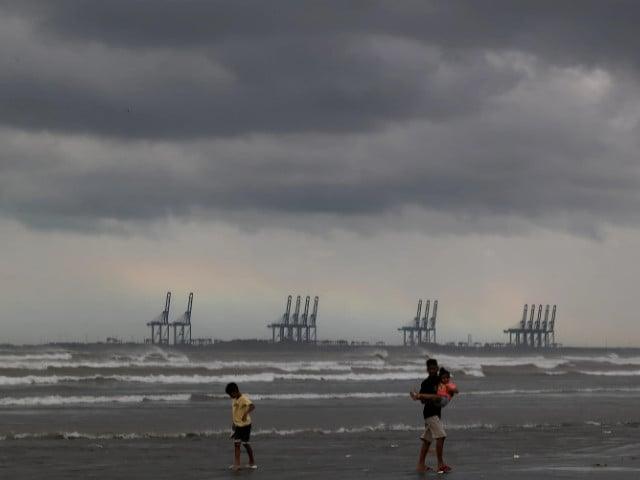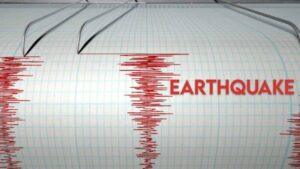Cities that have a coastline are considered lucky all over the world, whether it is the coast of Los Angeles or the coast of Bali in Indonesia, a more humble country, it becomes the main attraction for tourists and locals alike.
Tourists visit beaches for different reasons, to sunbathe and see what local life and the coast are like, while locals visit them for very different reasons, Karachi is no exception in this sense and the main focus of people Since the 1980s it has been Sea View Beach.
Located outside the posh town of Defense and Clifton alike, it attracts hundreds of people every weekend or any holiday. As the population grew, so did the crowds.
Locals and tourists alike visit Sea View Beach, which offers a variety of attractions, whether it’s fried fish, fresh fish or a buggy ride for the kids; Families love going to Sea View Beach.
In the 1980s and 1990s, it was a popular tourist destination because it had a beach and a playground that offered a variety of attractions for youngsters, including artifacts made from seashells collected from the shore.
PlayLand, over time, shrank as the volume of people increased exponentially. It still exists, but it is not the main focus of people who visit the coast regularly.
Over time, gadgets arrived and another dimension was introduced, that of very superstitious people who visited the Coast. Most of the people had migrated to the megacity in search of better employment, but they also came with their own style of “folklore”, which did not exist before.
Now, people visit the coast for different purposes, mainly, they come in large numbers to get rid of any “supernatural ailments”, whether a perceived evil eye, a hex or simply a possession, but also the sense of connection to the land and the sea. was lost, so a large volume of people visiting the coast carelessly dumped plastic waste and other forms of waste directly into the sea.
This blatant and constant disregard for the environment changed the landscape over time, the sea water became murky and the once thriving marine life was severely affected, leading to a serious overall ecosystem imbalance problem.
Although very disturbing, this serious problem is ignored by most as the focus has changed from admiring a sunset on the beach or relaxing on the coast to removing hexes, curses and evil eyes, causing a person to concentrate too much. in fixing any problem. personal problems, instead of enjoying the relaxing atmosphere of the sea.
Nature has a way of protesting, and when challenged in any way, anger comes in many forms as the once beautiful coastline of Karachi has become murky.
This is due to the constant flood of plastic waste as the city’s entire sewage system is dumped into the sea, which now reeks of decomposition, mainly because marine life is in serious danger of extinction.
Compared to three or four decades ago, the many varieties of fish served in the city have become extremely scarce and therefore very expensive.
Environmentalists are worried because Pakistan is the fifth country in the world affected and vulnerable to climate change, which is a reality.
You only have to look at the erratic weather patterns to see that the climate has changed and if concrete and serious measures are not taken to address this very real problem, Pakistan would suffer in the long run.
The destruction of marine life did not occur overnight, but was gradually eroded as debris, solid or otherwise, accumulated on the coast, and huge volumes of water were also continually dumped into the sea. residuals.
DHA Karachi took the initiative in this case when the trend of littering became more acute and sewage disposal became a concern.
Introduced five Wastewater Treatment Plants (WWTP) in five different locations, and all of them together have the capacity to treat 8 million gallons of water per day (MGD), of which 3 MGD (the treated gray water) are used for green use. spaces.
Why did the DHA find it important to introduce this?
The reason is simple: the water that goes to the sea goes through a treatment procedure before being discharged into the sea, which ensures that the seawater remains clean of toxic waste.
This is also in line with the National Environmental Policy, which was ratified in 2005.
Farhan Anwar, assistant professor at Habib University and urban planner, explains: “The reason marine life is in danger is because solid waste that goes into the sea is toxic to marine life and the problem worsens when the waters Wastewater is also dumped into the sea. sea.
The only solution is to introduce Treatment Plants, so that the water discharged into the sea is not toxic.”
Nature is a beautiful harmony of balance, day and night, winter and summer, nature nourishes, but when nature is attacked, it is humans who have to face the consequences, that despite all the technology, humans do not we can defy nature in any way.
The leadership role taken by DHA Karachi needs to be appreciated as it had the foresight to predict the trajectory of harmful effects of wastewater, which was also in line with the National Environmental Policy.
It would be even better if industry leaders and stakeholders took the matter as seriously and introduced their own STPs before the water is released into the sea.
Other institutions can follow the example of DHA Karachi to do the same. It is imperative that environmental laws are implemented in letter and spirit and remain in line with the Sustainable Development Goals. After all, no matter where we are, our home is where we live and it is our duty to keep our homes clean.




